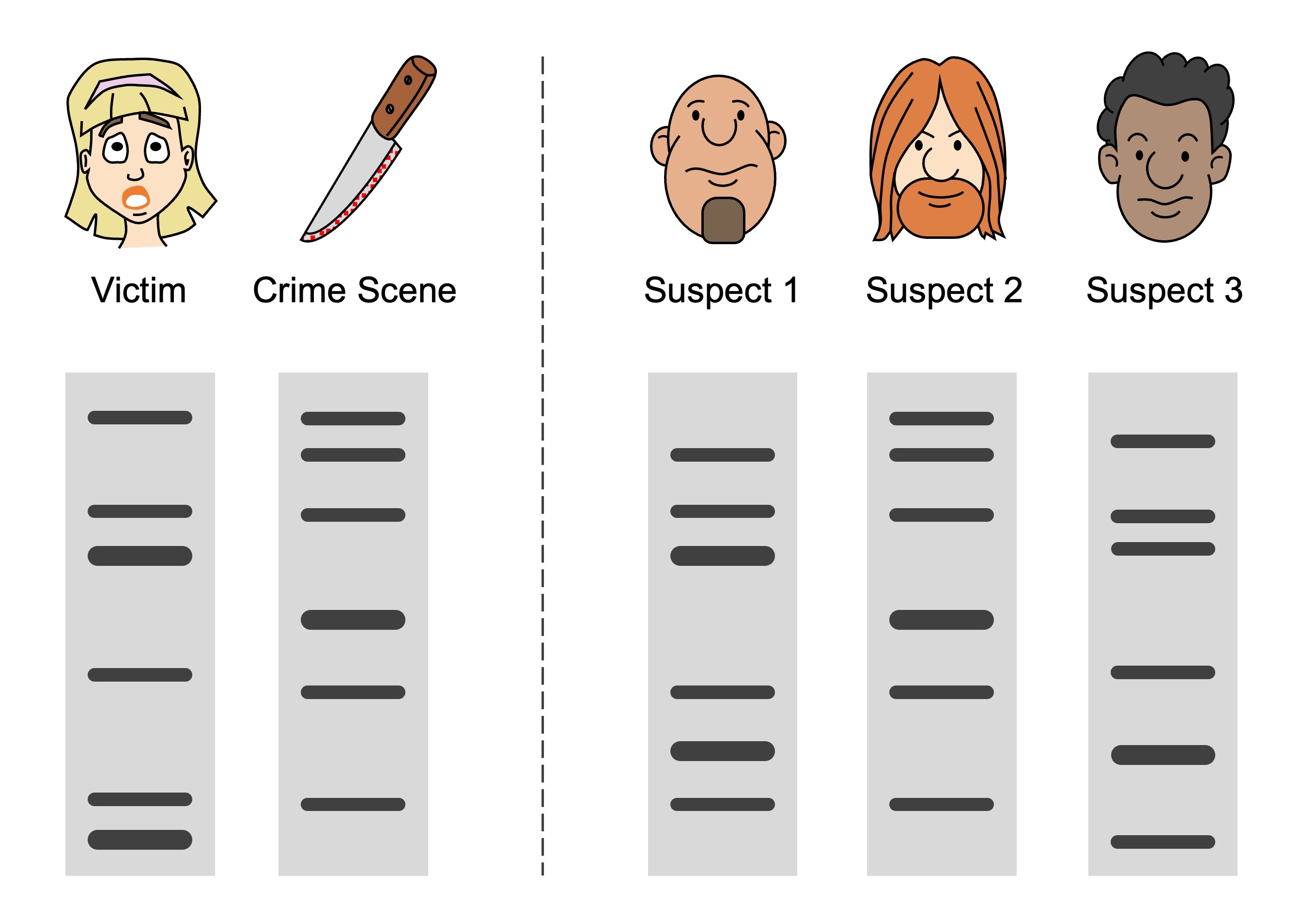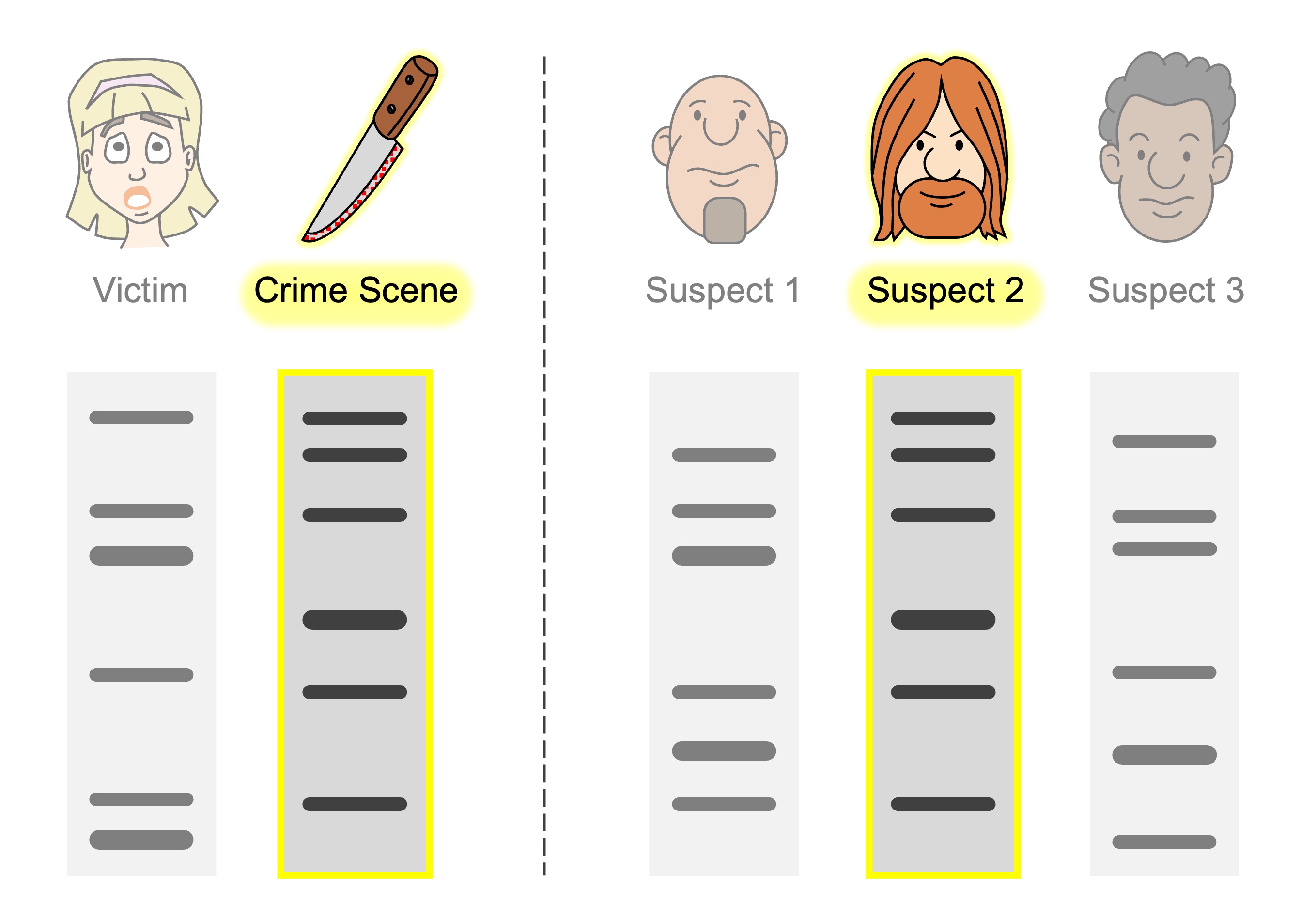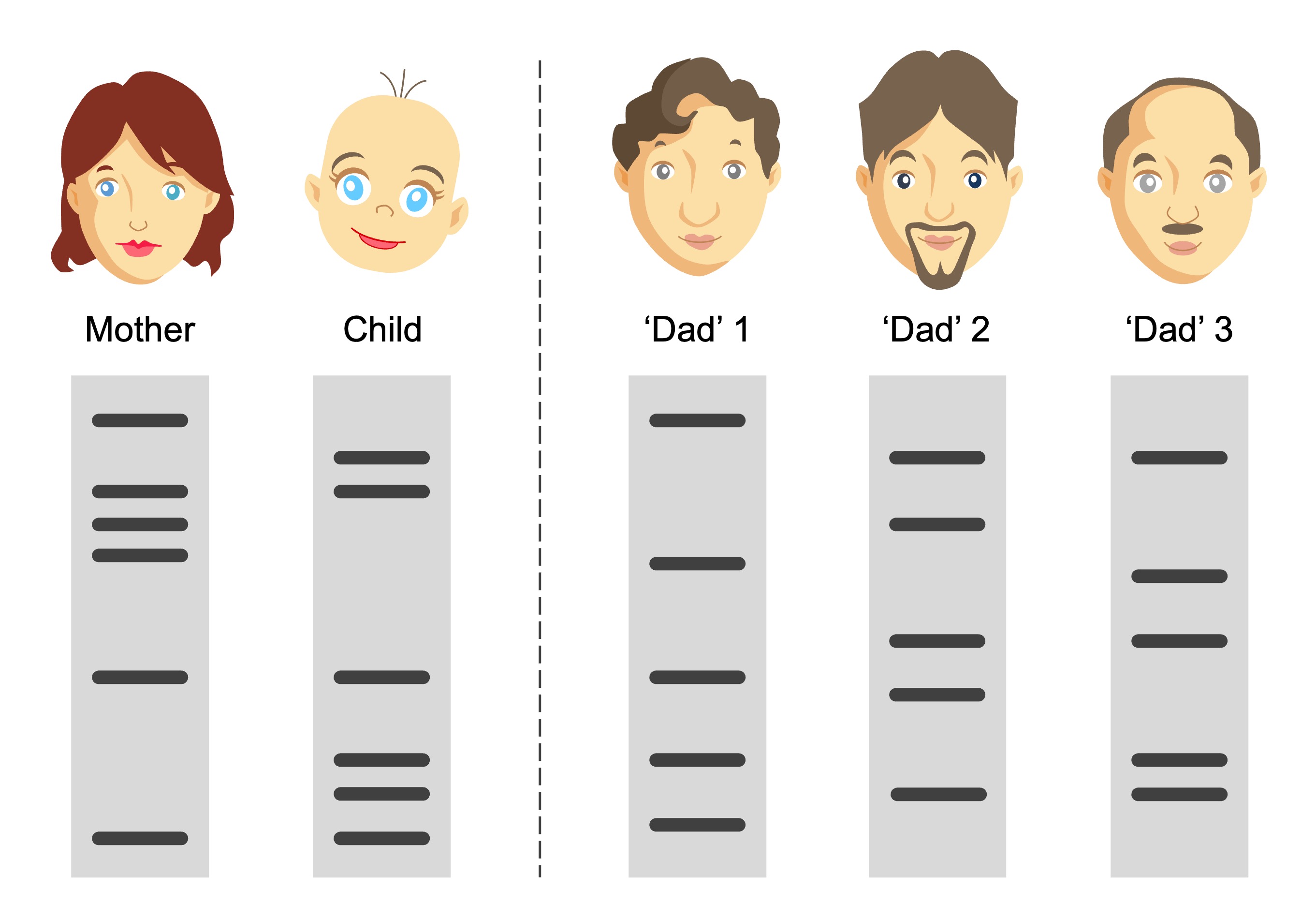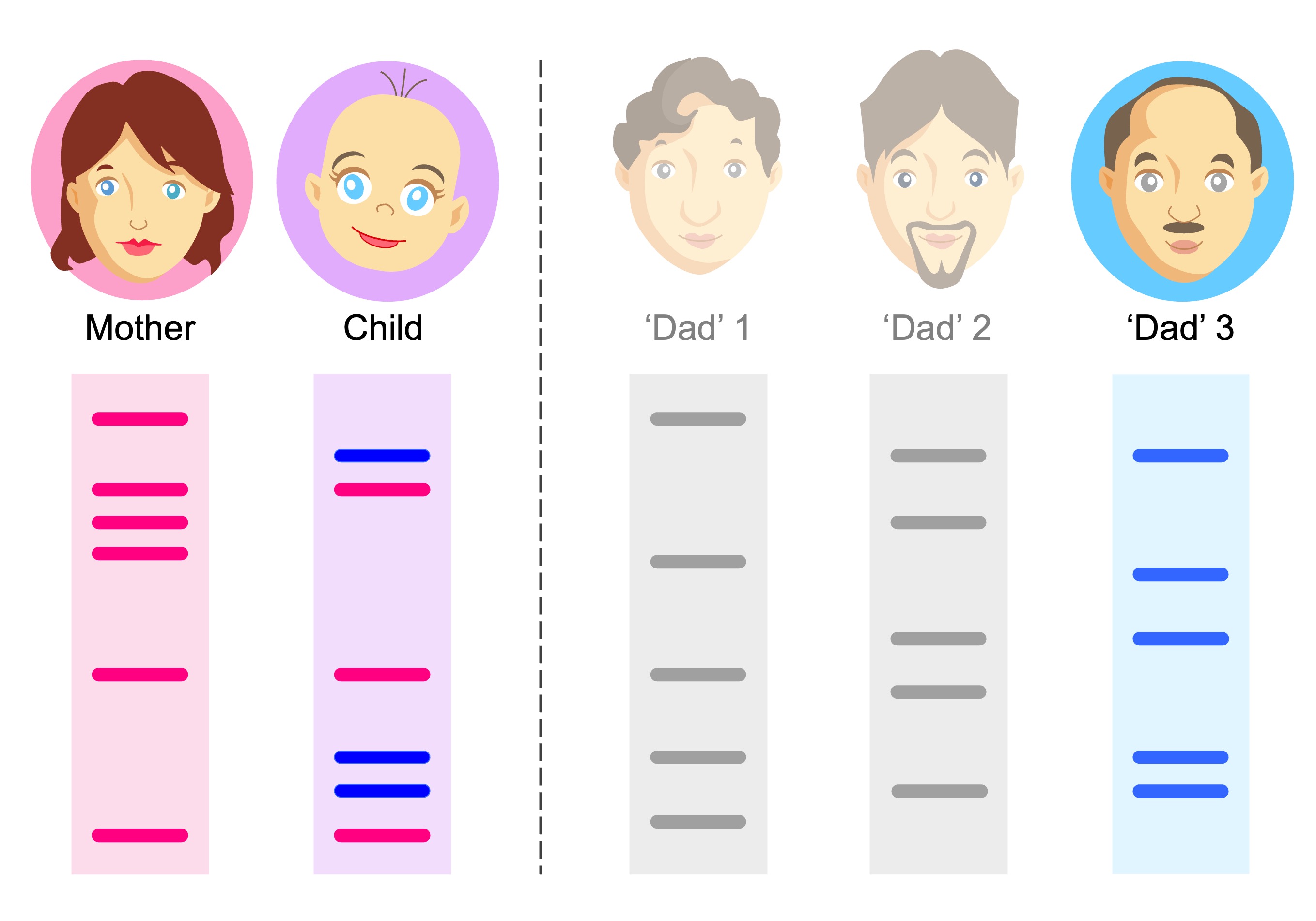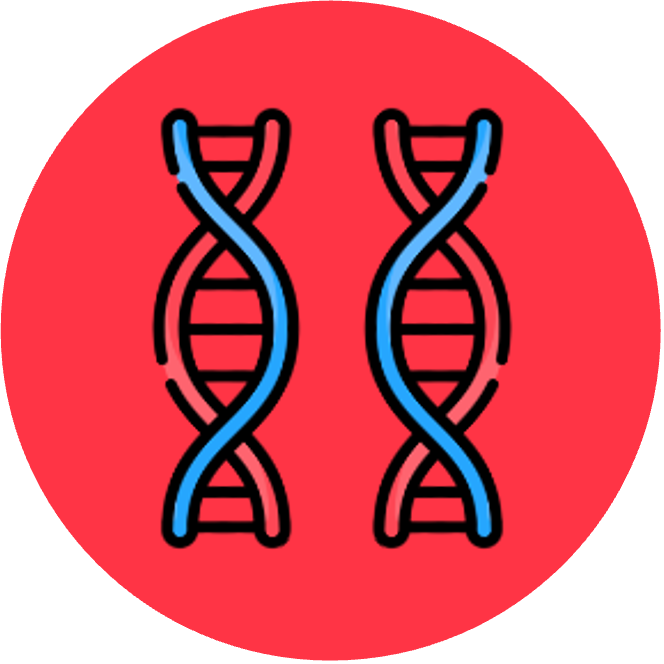

DNA Applications
PCR and gel electrophoresis are common molecular techniques used in a variety of biotechnological applications
-
DNA profiling uses these techniques to identify individuals based on DNA comparisons
-
Gene cloning involves the use of these techniques to insert genes of interest into different species (transgenics)
-
Sequencing (via the Sanger method) uses these techniques to determine specific DNA sequences
DNA Profiling
DNA profiling is a technique by which individuals can be identified and compared via their respective DNA profiles
-
Within the non-coding regions of an individual’s genome there exists long stretches of DNA made up of repeating elements called short tandem repeats (STRs)
-
As individuals will likely have different numbers of repeats at a given STR locus, they will generate unique DNA profiles
STR Loci



DNA profiling is commonly used in criminal investigations (forensics) and to settle paternity disputes
-
A DNA sample is collected (e.g. from blood, semen, saliva, etc.) and then amplified using PCR
-
STR sequences are cut out with specific restriction enzymes to generate fragments
-
Fragment length will differ between individuals due to the variable length of their short tandem repeats
-
The fragments are separated using gel electrophoresis and the resulting profiles are compared
For forensic investigations, suspects should be a complete match with the DNA sample taken from the crime scene if a conviction is to occur
-
The number of loci used to generate a unique profile depends on the size of the population being compared
-
America (population: ~ 320 million) uses 13 loci for comparison; Australia (population: ~ 25 million) uses only 9 loci
-
For paternity testing, children inherit half their chromosomes from each parent and thus should possess a combination of parental fragments
-
In other words, all fragments produced in the child should also be produced by either the mother or father
DNA Profiling Applications
Forensic Investigation
Paternity Testing
Gene Cloning
Gene cloning is the process of isolating and copying a gene of interest in order to facilitate its expression within a different host organism
-
The transfer of genes between species is called gene modification, and the new organism created is called a transgenic
Gene cloning involves inserting a gene of interest into a molecular delivery vehicle (vector) – such as a plasmid
-
The gene of interest and plasmid vector are isolated and amplified via PCR
-
The gene of interest and plasmid are both cut with the same restriction endonuclease to generate complementary terminal sequences
-
The gene of interest is joined to the plasmid vector using DNA ligase (creating a recombinant plasmid)
-
The recombinant plasmid is introduced to a host cell, whereupon the gene of interest will be expressed
Genetically modified organisms are used in agriculture and farming to address a variety of specific issues, including:
-
Malnutrition: Golden rice has been engineered to produce high levels of vitamin A (which helps to prevent blindness)
-
Longevity: Flavr Savr tomatoes have been engineered to have an increased shelf life (by deactivating the genes for ripening)
-
Pest resistance: Bt corn has been engineered to be toxic to the European corn borer (a pest species that feeds on maize crops)
Gene Cloning Overview



DNA Sequencing
The most widely used method for DNA sequencing involves the use of chain-terminating dideoxynucleotides (Sanger method)
-
Dideoxynucleotides (ddNTPs) lack the 3’-hydroxyl group necessary for forming a phosphodiester bond
-
Consequently, ddNTPs prevent further elongation of a nucleotide chain and effectively terminate replication
-
When PCR is conducted, the resulting length of a DNA sequence will reflect the specific nucleotide position at which the ddNTP was incorporated
-
As a typical PCR will generate over 1 billion DNA molecules, each PCR mix should generate all the possible terminating fragments for that particular base
-
When the fragments are separated using gel electrophoresis, the base sequence can be determined by ordering fragments according to length
Sanger Method



